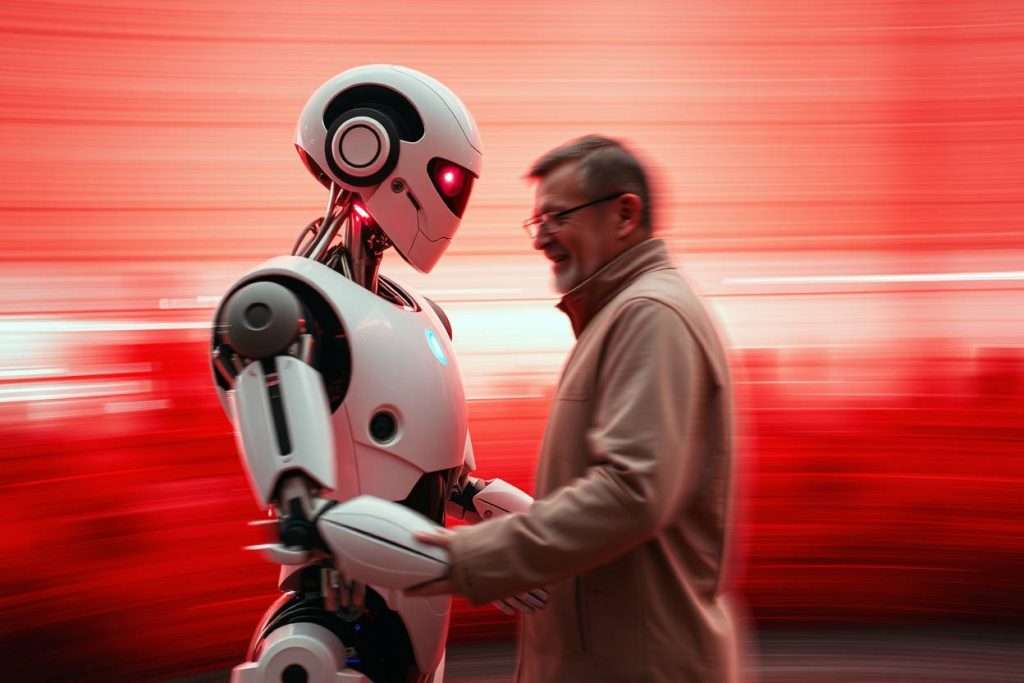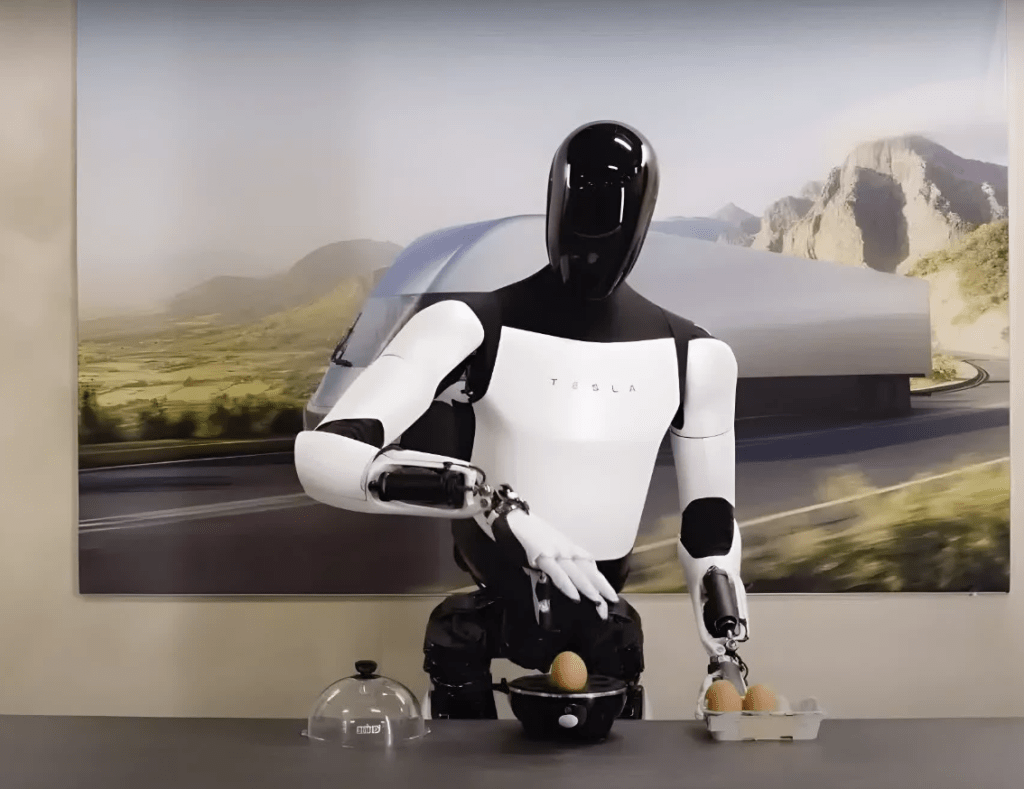AI Companion Robots in 2025: What They Cost, What They’re Good For, and How Much to Expect

An ai companion robot is a machine with artificial intelligence designed to interact with humans, offering emotional support and practical assistance. Modern systems leverage this capability to address critical needs like social isolation, but their impact on senior care is particularly significant. Understanding how much do robots cost is no longer a futuristic consideration; it’s a present-day reality, with these devices already moving from science fiction to functional household members that are fundamentally changing the approach to personal care and companionship.
What is an AI companion robot?
An AI companion robot is a physical, intelligent machine designed to provide companionship, assistance, and emotional support through social interaction. In simple terms, it is technology that mimics social intelligence; it can learn from your habits, recognize your emotions, and engage in conversation, all within a body that can move and interact with its environment.
You already see AI in action with smart assistants like Siri and Alexa, which answer your questions and follow commands. An ai companion robot takes this concept much further. With a physical body, it can navigate your home, express “emotions” through movement and sound, and proactively start conversations instead of just waiting for instructions. It’s the difference between a stationary smart speaker and a mobile, interactive friend.
For users, an ai companion robot offers:
- Companionship and Emotional Support: It actively reduces loneliness with conversation, interactive games, and simulated affection, making it a valuable presence for seniors or individuals living alone.
- Practical Home Assistance: It acts as a mobile hub for your smart home, controls lights and thermostats, patrols for security, and can even check on pets while you’re away.
- Health and Wellness Monitoring: It reminds users to take medication, encourages physical activity, and can alert caregivers in case of an emergency, providing peace of mind for families. This is how AI can provide health and wellness support to older adults.
- Education and Entertainment: It serves as an interactive tutor for children, tells stories, plays music, and offers engaging activities for the whole family.
In summary, an ai companion robot is about blending advanced AI with a physical presence to create a device that not only performs tasks but also provides a sense of connection—making technology feel more like a part of the family.
What Exactly Is an AI Companion Robot in 2025?
As we move through 2025, the distinction between smart gadgets and true companions becomes clearer. These robots are no longer just concepts from science fiction; they are commercially available devices with specific designs and purposes.
How are companion robots different from smart assistants like Alexa?
The primary distinction lies in their physical and cognitive presence. Companion robots have physical embodiment and mobility, which allows them to navigate and interact with their environment in ways a stationary speaker cannot. For example, a robot can physically bring you an item, patrol the house for security, or nuzzle into your hand for a tactile response.
Furthermore, they operate with a degree of proactive and “affectionate intelligence.” Where a smart assistant waits for a command, an ai companion robot learns routines and initiates conversations or actions. They are designed to notice if a user seems sad or lonely and offer a comforting interaction, moving from a reactive tool to a proactive presence in the home.
What are the core technologies that make AI robots “companions”?
Several key technologies converge to bring these companions to life:
- Advanced AI and machine learning: These systems are the brains of the operation. They allow the robot to develop a unique personality, learn from interactions, and adapt its behavior to individual users over time.
- A suite of sensors: To understand their world, these robots are equipped with cameras for facial recognition, microphones for voice recognition, and touch sensors for physical interaction. This allows them to recognize who they are talking to, understand emotional tone, and respond to physical affection.
- Natural language processing (NLP): Modern companion robots integrate with sophisticated Large Language Models, some similar to ChatGPT. This gives them the ability to hold surprisingly deep and context-aware conversations, tell stories, and answer complex questions far beyond the scope of a basic smart assistant.
Who are AI companion robots designed for?
The market for companion robots is diverse, with devices tailored to specific demographics:
- Children: Robots like Miko, priced affordably around $137, are built for education and interactive play. They can teach coding, tell stories, and act as a safe, engaging tech companion for kids.
- Adults: Many adults purchase an ai companion robot for companionship or as a piece of novelty technology. Pet-like robots such as Loona (around $500) offer the affection and interaction of a pet without the responsibilities of a living animal.
- Seniors: This is a rapidly growing market. An ai companion robot for seniors, such as ElliQ, Hyodol, or the therapeutic Tombot, is designed for monitoring, cognitive engagement, and emotional support to combat loneliness.
What is the best AI companion for seniors?
Robots like ElliQ and Hyodol are specifically designed for seniors. They focus on medication reminders, facilitating communication with family, and providing proactive engagement to combat loneliness.
What Are the Practical Benefits of Owning an AI Robot Companion?
Beyond novelty, these robots deliver tangible benefits by filling gaps in emotional support, home management, and specialized care. They address real-world problems with targeted technological assistance.
Are AI companion robots a good idea?
Yes, they can be an excellent idea for providing emotional support, reducing loneliness, and assisting with daily tasks. They are especially beneficial for children, seniors, and those unable to have live pets.
How do they provide companionship and emotional support?
Their core function is to mitigate loneliness. They accomplish this through interactive conversations, playing games, and participating in shared activities like listening to music. They are programmed to mimic lifelike behaviors and emotional responses; for example, the Tombot was specifically designed to provide comfort to dementia patients by realistically simulating a companion animal. For those who cannot own a live pet due to allergies, housing restrictions, or physical limitations, these robots offer a low-maintenance, allergy-free alternative.
What can an AI companion robot actually do in the home?
Modern companion robots are becoming central hubs for the smart home. Devices like LG’s Q9 AI Agent and Samsung’s Ballie can integrate with other smart devices, allowing them to manage lights, thermostats, and appliances. They also serve as mobile security systems. Models from companies like Enabot (with prices from $119 to $999) can patrol the home, send alerts about unusual activity, and allow users to check in on their pets remotely. On a simpler level, they function as dedicated entertainment platforms, capable of storytelling, playing music, and facilitating games.
How are they used in specialized fields like healthcare?
In healthcare settings, these robots provide critical support. This is how AI can provide health and wellness support to older adults and others with specific needs. They assist in therapeutic environments by providing comfort and reducing anxiety in patients. At home, they can be programmed to remind users to take medication, track wellness metrics like activity levels, and alert caregivers to potential issues. In more advanced applications, robots like Robear are being developed to aid in physical tasks, offering mobility and lifting assistance to those with physical limitations.
How Much Do AI Companion Robots Cost in 2025?
The cost of an ai companion robot is determined by its utility and technological sophistication. Prices range from just over one hundred dollars for simple desktop companions to tens of thousands for advanced humanoid models. Understanding how much do robots cost means looking at their specific capabilities.
What is the price range for consumer-level companion robots?
For most consumers, the entry point for an ai companion robot for adults for sale falls into two main categories:
- Entry-Level Desktop Companions: These typically cost between $130 and $500. This category includes popular models like Eilik, Miko, and Loona, which offer personality and interaction in a compact form factor.
- Advanced Pet-like Robots: For a more sophisticated experience, consumers can look at models like Sony’s Aibo, which costs around $2,900. These robots have superior mobility, learning capabilities, and sensory feedback.
Are there subscription fees or ongoing costs?
Yes, the initial purchase price is often not the final cost. Many advanced robots require subscriptions for cloud processing and premium AI features. For instance, Sony Aibo’s AI Cloud Plan, which enables its learning capabilities, costs about $300 per year. For more complex robots, maintenance is another consideration, with annual costs potentially ranging from $1,000 to $10,000 for high-end models.
How Much Does a Humanoid Robot Cost
The discussion of how much do robots cost to make and sell reaches a different scale with humanoids.
- Advanced Humanoids: Tesla’s Optimus is estimated to cost between $25,000 and $30,000, while the Figure 01 could be priced up to $150,000.
- Customizable Companions: For those seeking a highly personalized ai companion robot for adults for sale, companies like Realbotix offer stationary, customizable models. A robotic bust starts at $20,000, while a full-bodied, mobile F-Series model can exceed $125,000.
What is the lifespan of a companion robot?
The lifespan varies by model but typically ranges from 3 to 8 years. This depends on build quality, battery health, and the manufacturer’s commitment to ongoing software support.
How to get a robot companion?
Robot companions can be purchased directly from manufacturer websites (like Realbotix or Sony), through major online retailers like Amazon, or from specialized robotics stores.

What Should We Expect from Companion Robots in the Near Future?
The technology is advancing quickly. The companion robots of today are a stepping stone toward more integrated and capable assistants that will become common in homes and workplaces.
What new capabilities are emerging in 2025?
Three key areas of development are pushing the boundaries:
- Deeper Conversational Abilities: Integration with next-generation Large Language Models will allow for more natural, context-rich, and meaningful conversations.
- Improved Mobility and Dexterity: Future robots will be better equipped to perform physical household tasks, such as tidying up, fetching items, or even basic meal preparation.
- Greater Emotional Intelligence: AI will become more adept at understanding and responding to nuanced human emotions, allowing for more proactive and empathetic assistance.
Who are the key companies and models to watch?
The market is populated by a mix of established tech giants and focused startups. Key players to watch include:
- For Pet-like Companionship: Sony (Aibo), Loona
- For Desktop Interaction: Eilik
- For Home Utility & Security: LG (Q9 AI Agent), Samsung (Ballie), Enabot
- For Humanoid Development: Tesla (Optimus), Figure, Realbotix
How will AI robots integrate more deeply into our daily lives?
We can expect to see a shift where these robots move from being novelty gadgets to becoming functional members of the smart home ecosystem. Their roles will expand significantly in elder care, where they can provide continuous monitoring and companionship, as well as in childcare and specialized education, offering personalized tutoring and interactive learning experiences.
Conclusion: Are AI Companions a Glimpse of the Future or a Passing Fad?
The evidence in 2025 points to the ai companion robot as a durable and growing category of consumer technology. They are no longer a niche interest but a practical solution for companionship, home assistance, and specialized care. As these robots learn our routines and emotions, we are also learning how to connect with artificial beings. This evolving two-way relationship, rather than the technology itself, may be the most significant development of all, reshaping our understanding of companionship in a digital world.




